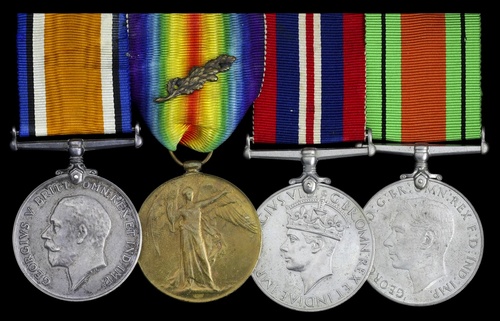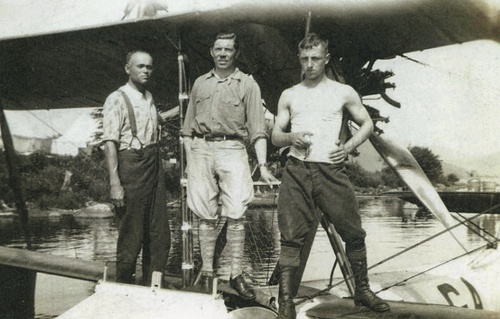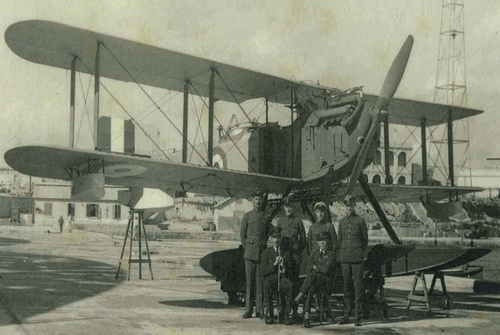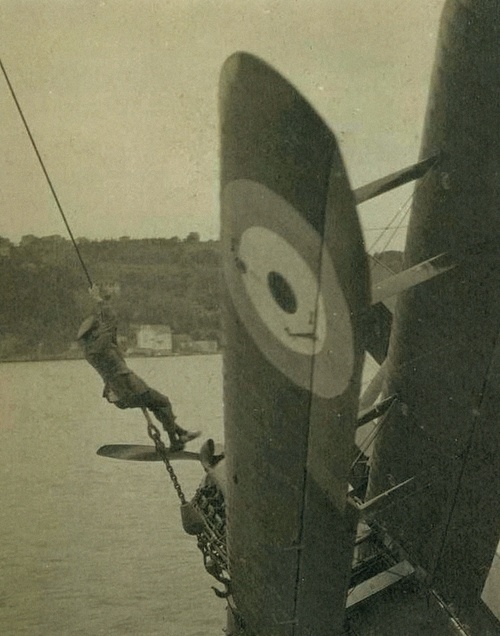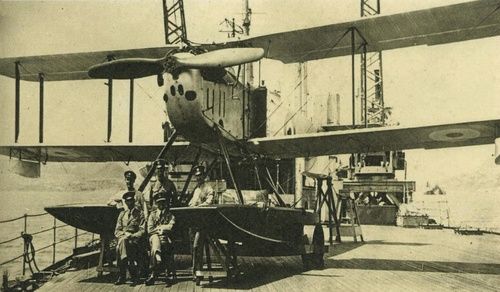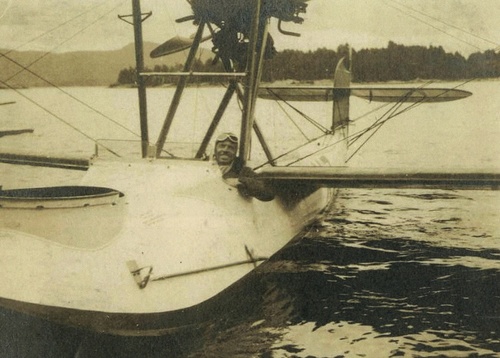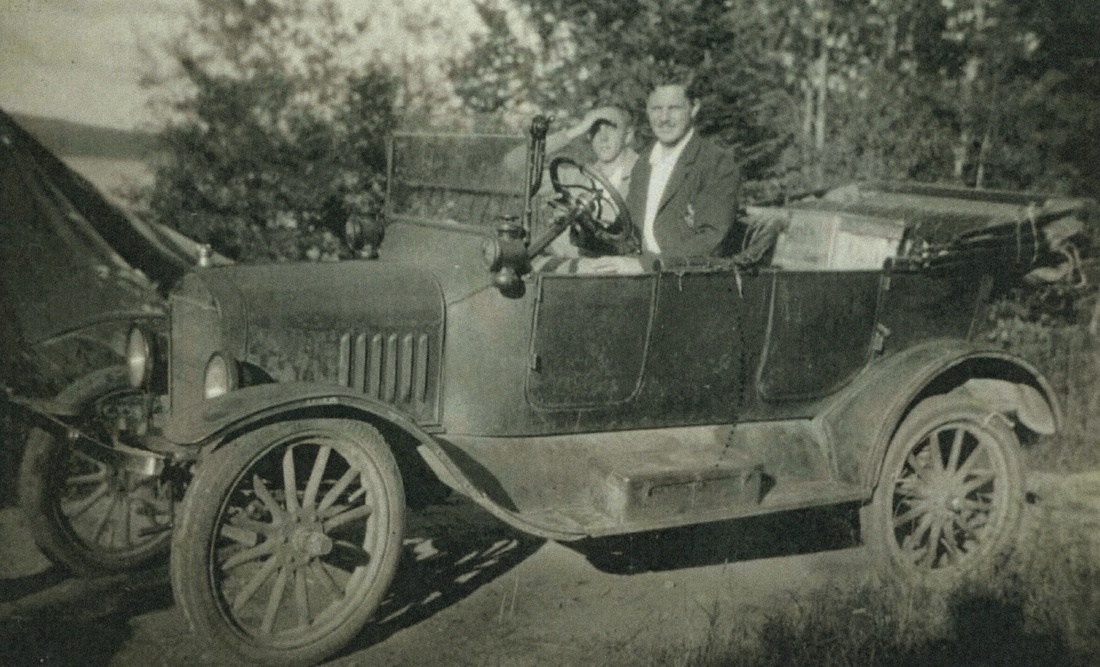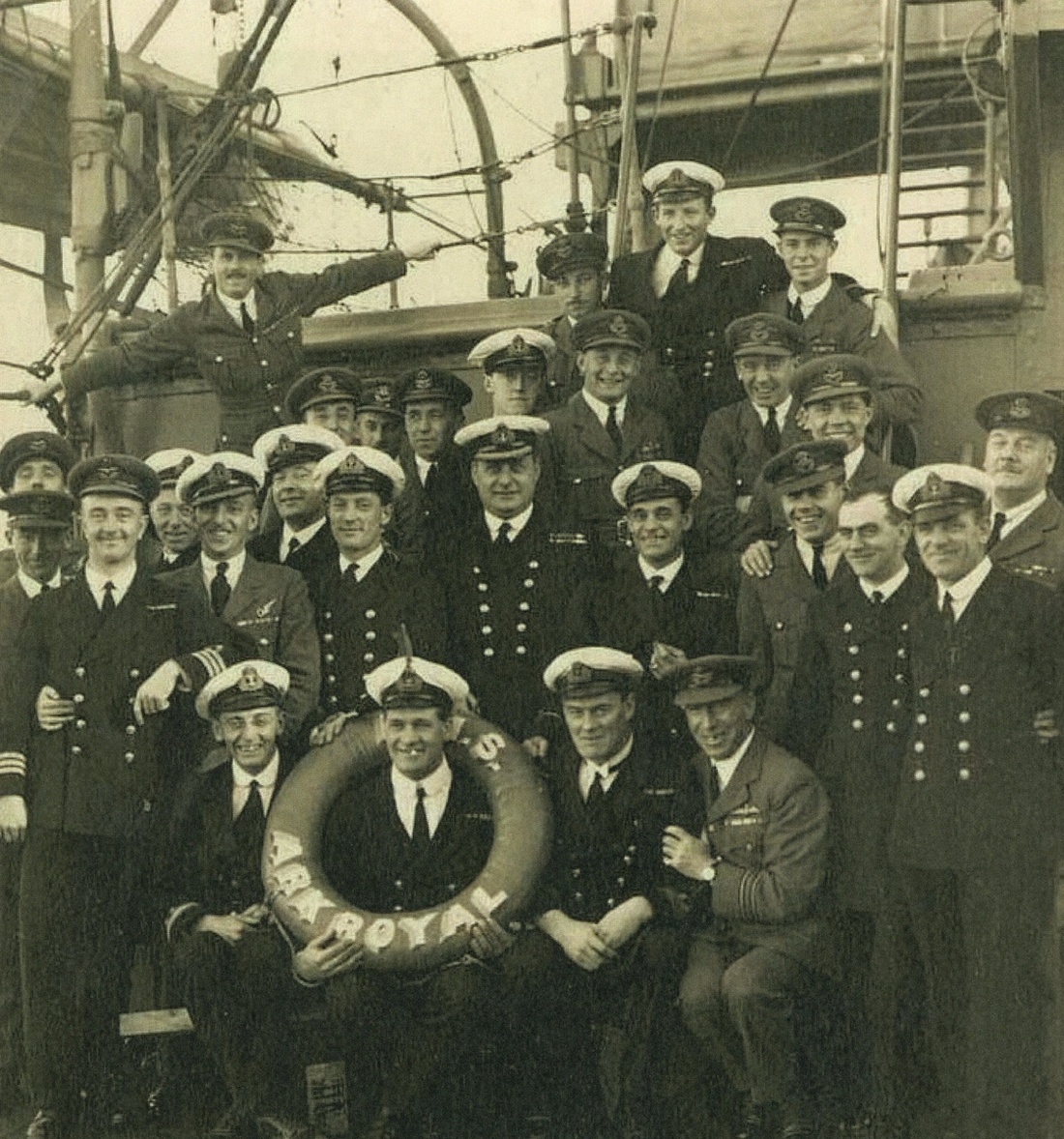Auction: 19001 - Orders, Decorations and Medals
Lot: 849
(x) 'An hour later, machine turned upside down. Kingham and I clung to floats till 18.30 on the 24th when we were picked up by H.M.S. Asia (Lt. Wilson) 20 miles south-west of Cape Orlok. I had given up hope and was in a pretty rotten state. Asia very decent, gave us hot drinks, hot bath, grub and bed. Arrived Petrovsk 1700, 24th May, reported to Commodore.' An extract from Sadler's log book published in Gone to Russia to Fight: The R.A.F. in South Russia 1918-20, refers.
A fine 'North Russia' group of four to Captain J. A. Sadler, Royal Air Force, late Royal Naval Air Service, who piloted the seventh seaplane raid in 24 hours on Alexandrovsk on 22 May 1919; both he and his Observer, 2nd Lieutenant F. L. Kingham, survived the Bolshevik flak, but were forced to land on the Caspian Sea in deteriorating weather, their tailplane, elevator and rudder being 'wrenched off'. It would be 20 miserable hours clinging to the wreckage before they were both saved
British War and Victory Medals with small M.I.D. oak leaves (Capt. J. A. Sadler. R.A.F.); Defence and War Medals 1939-45, mounted as worn, very fine (4)
John Archer Sadler was born on 4 January 1893, the son of Geoffrey E. Sadler of Woodville, Watford, Hertfordshire. He worked at the Bank of England, before enlisting into the Royal Naval Air Service on 11 July 1915, as Temporary Flight Sub-Lieutenant at Whale Island. Transferred to Hendon, Eastbourne and Calshot, he was promoted Flight Lieutenant in December 1916, before serving aboard the seaplane carrier H.M.S. Vindex from 8 April 1916-23 January 1918. He would have witnessed the departure of the second raid on the Zeppelin base at Tondern by eleven Sopwith Baby floatplanes, although his participation remains unconfirmed.
Transferred to the Royal Air Force on 1 April 1918 after a brief spell at East Fortune, Sadler joined No. 266 Squadron on 10 March 1919, which had departed Mudros the month before and transferred to the Caucasus aboard H.M.S. Engadine. It was here, operating from the air base of Petrovsk and H.M.S. Aladar Yousanoff as part of the British Caspian Flotilla, that Sadler found himself in the thick of the action once more as part of the allied intervention in the Russian Civil War.
It was on 12 May 1919 that Captain J. A. Sadler with Observer 2nd Lieutenant F. Kingham flew 266 Squadron's first operational mission, a 3.5 hour bombing and reconnaissance flight. No suitable targets were found, but their account was opened. On 20 May, fellow pilot 2nd Lieutenant Howard Thompson flew on the first bombing mission over Alexandrovsk in N9080, and experienced heavy anti-aircraft fire over the harbour - he returned, but pilot 2nd Lieutenant Robert Morrison in N9079 fared less well that afternoon. The engine failed whilst in a climbing turn at 200ft and the aircraft crashed into the sea. Both aviators were rescued, but the Aladar Yousanoff was down to a single aircraft.
That afternoon, Sadler and Kingham attempted a bombing raid but returned due to condensation in the petrol tank which caused the engine to splutter intermittently. The next day they had more success, taking off a little after 1500 hrs and successfully bombed and strafed the harbour from 3000ft.
Unlucky seventh
The morning of 22 May 1919 was bright with clear skies. At 0530 hrs 2nd Lieutenant Robert Morrison and his Observer, 2nd Lieutenant Henry Pratt flew the first of five raids on Alexandrovsk harbour that day in the same aircraft with alternating crews. Having bombed and strafed without result, they returned to the Aladar Yousanoff to refuel and rearm. The second mission under Lieutenant Howard Thompson and Observer Frank Bicknell scored a direct hit on the Finn-Class destroyer Muskvityanise. On their return, Thompson and Kingham took off for the third raid, dropping a 230 lb bomb between a destroyer and the Kaspy. According to Churchill's Secret War with Lenin:
'Coming down to 2,500ft, Sadler dropped his four 16 lb bombs on the fighting fleet whilst Kingham blazed away with the observer's machine gun.'
On their return, Morrison and Pratt flew their second mission of the day, hotly followed by Thompson and Bicknell on the fifth raid at 1630 hrs. At 1800 hrs, Sadler and Kingham made an attempt to fly a sixth mission, until deteriorating visibility forced their return to the seaplane carrier shortly after takeoff.
After a night of heavy fog, two Bolshevik destroyers began to open accurate fire upon H.M.S. Kruger and H.M.S. Venture from 16,000 yards, well out of range of the British guns. Sadler and Kingham took off to harass the enemy ships but the mist held them back and they raided Alexandrovsk harbour instead, bombing a large 'Volga' barge armed with a 6 inch gun. On return, unable to locate the Aladar Yousanoff in low visibility, they landed on the edge of the fog bank on the Caspian and taxied eastwards for an hour and a half hoping to sight land. That evening a heavy swell developed and the aircraft began to come apart - Sadler and his Observer desperately clung on to the wreckage before being spotted and picked up by H.M.S. Asia the following day. It had been a lucky escape after some 20 hours. Sadler was awarded a well-deserved mention (London Gazette 9 October 1919, refers), the despatch of Rear Admiral Commanding, Black Sea and Sea of Marmora, Sir Michael Culme-Seymour, noting:
'I have the honour to call particular attention to the services rendered by the following officers of the Royal Air Force who between them carried out five raids in one seaplane on the same day, with excellent results, and attempted a sixth, and also the services of Lieutenant Chilton, R.N.R., Commanding "A. Yousanoff," for his able handling of the ship and organisation which allowed this to be done. Pilots - Second Lieutenant Howard Grant Thompson, Captain John Archer Sadler, Second Lieutenant Robert George Kear Morrison.'
Return to the fray - another close call
By mid-July 1919, Aladar Yousanoff's engines had deteriorated to the point where she could no longer be used for seaplane operations, and her two Short 184's and guns were moved to H.M.S. Orlionoch. On the morning of 24 July, Sadler, with Observer Lieutenant Tarton-Jones in Short 182 N9078 accompanied by Lieutenants McCughey and Wake in N9081, made an attack on a Bolshevik armed tugboat near the mouth of the Volga from an altitude of 800ft. The tug returned fire with a machine gun, one round cutting the main oil line of Sadler's aircraft causing the engine to belch thick black smoke before completely seizing 20 minutes later. Sadler managed to put the aircraft down as McCughey flew back to Orlionoch and organised a rescue by CMB's 51 and 60 which towed the stricken aircraft back to safety. Sadler added another mention (London Gazette 22 December 1919, refers):
'In recognition of distinguished services rendered during the War and since the close of hostilities.'
For his services in Russia, it seems remarkable that Sadler carded a 'brace' of mentions. Fellow aircrew flying from the Aladar Yousanoff were decorated, including Lieutenant Chilton who received a second Bar to his D.S.C., Lieutenant Bicknell who was awarded the D.F.C., and 2nd Lieutenant Thompson, who also received the D.F.C.
Following the disbandment of No. 266 Squadron on 1 September 1919, Sadler continued to see extensive service with the Royal Air Force, promoted Squadron Leader on 10 October 1928 and Wing Commander on 1 July 1935. He retired as a Group Captain on 1 January 1942. He became engaged to Rebecca Manners of Penzance, Cornwall, in September 1929 and the couple married the next year. In retirement, Sadler resided at Greengates, Abbots Langley, Hertfordshire; sold with extensive copied research.
The J. A. Sadler photographic archive was donated by his wife to the Royal Air Force Museum. For details see:
https://www.flickr.com/photos/royalairforcemuseum/albums/72157632658095064/page1
Subject to 5% tax on Hammer Price in addition to 20% VAT on Buyer’s Premium. For more information please view Terms and Conditions for Buyers.
Sold for
£1,000

